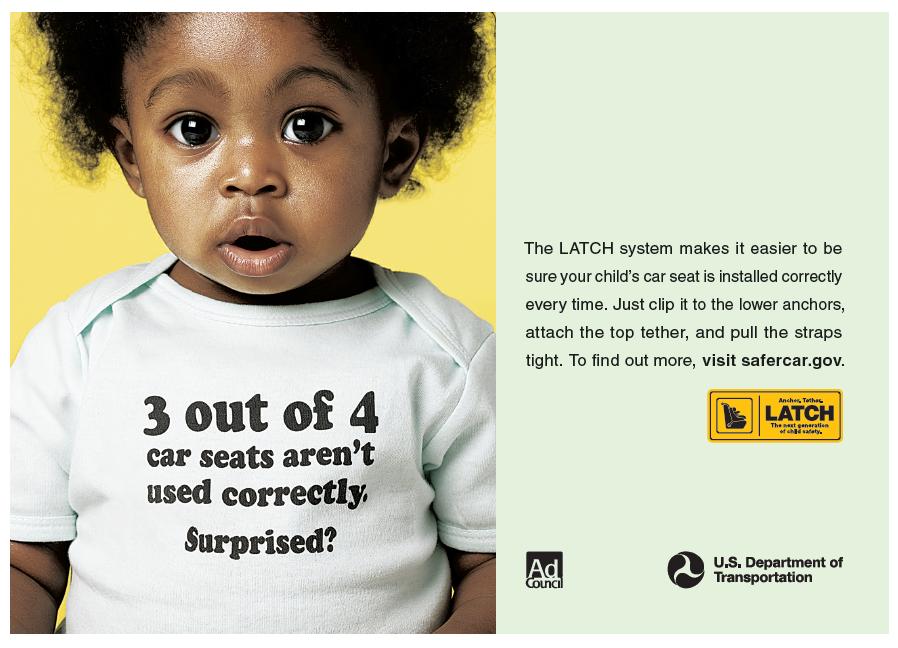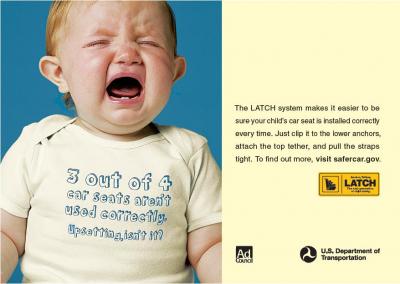Learn about advertising from John Richards, an advertising professional. 
Q & A With An Advertising Professional
John Richards, Chief Creative Officer, Jack Levy Associates
Q: Why do you do pro bono work?
A: There are two good reasons. The first and most important one is that you really care about the project that you are involved in. Often creative peoples' minds wander all over the world and get involved in all kinds of things. When we encounter things that we can really add our skills to, issues that really matter, it's a big boon. The other reason is this and it's a very selfish one. The bulk of products that you work on as a creative person in advertising are pretty boring. If it's drunk driving or a drug free America or if its a teen pregnancy or any of those other things, there's an inherent drama that allows us as creative people to do ads that really showcase our creative skills. And for that reason we want to be involved.
Q: What non-profit organizations have you worked with?
A: United Way Foundation AIDS Charity Benefit Exceptional Children's Foundation National Council for Prevention of Child Abuse
Q: Walk us through the process of creating a PSA.
A: The process is the same in creating advertising for a PSA as it is creating advertising for anything. In all cases, the place you begin is really thinking about your target audience. Who it is you want to touch with this advertising? What could I say to this person that will move them to want to be involved? One of the special rules in order to make video that really reaches out is make sure you work in a very simple imagery. You want to make one point inside the commercial and you want to make it in a very dramatic and simple way. That is the hardest thing to achieve. You think about the very simple drug commercial --your brain on drugs. It was stunningly effective because it was unexpected. It was a very clear visual message that you were going to fry your brain. One of the key things about approaching PSA work is to avoid the easy solution. The easy solution in PSA work is always tugging at the heart strings in a really pathetic sort of guilt-inducing way. I've seen probably the ad many times now of the bum who is scrounging around in a garbage can and some headline to the effect of "He's dining out tonight" or something like that.
Q: How does the creative process work? How do you create the theme? 
A: The creative process is an enormously painful process of focusing on a problem and sorting through and sorting through and focusing and thinking about what you're trying to say. Creativity is by definition outside a formula. The only formula that I know is that it takes a great deal of sweat to get there. It's sweat with a passion. You get in and you start sorting and focusing and thinking about the subject matter you are talking about and the people you are talking about. You censure yourself anytime you start getting overly sentimental. And in that process slowly emerges various directions that you sort of intuitively understand are very motivating to other people. There's a little magic involved. Every advertising professional can get to a great idea. In order to tell you they got there, they'll create all kinds of rational stories. But what happens is that you'll run down a rational path and come to a certain point and hit the edge of the world. You jump out and something takes place. When it takes place, suddenly you know it, and you've got it. You can't really rationalize how you got there. It just came out of all the work.
Q: When and how do you choose your target audience?
A: The organization always has a very clear idea of who they want to target and they almost always have some history of reaching that target as well. So some of the problems are already sorted out for you. And of course what we do is we look at what they've done in the past and say whether it was effective. But the decision about who you are going to target is made before the creative process kicks in. You sort through and think about what does that target audience believes right now. What's in their brain? What attitudes do they have? And then you start thinking well, What attitude would you like them to have? The how part of that equation is your strategy. What can you say that can change a person's mindset? What can you say that will change people's beliefs from what they believe now to what you want them to believe in the future?
Q: What kind of research do you do?
A: All the PSAs have a certain amount of research in advance but generally speaking, PSA assignments barely have enough money to run any advertising so they don't have any money for research.
Q: How do you get an ad produced?
A: There are a couple of means to do that. PSA clients very often have relationships with printers who will do things on the cheap for a good cause. We have certain vendors who we give a great deal of business to, video producers, editing houses, graphic studios. We can twist their arms and ask them if they will do this for the cost of their materials or whether they would be willing to contribute the whole thing for a charitable deduction. It's all in negotiation. And there is no guarantee that we can make those things happen. The PSA client usually will still end up having to cough up some money somewhere along the line. But we can do things to try to make it as cheap as possible.
Q: Do you have any method of evaluating the results?
A: It all depends on the mechanism that you've created. Some PSA work is image work, in other words it is intended only to put a message out there in the world. You know this is your brain, this is your brain on drugs. Drugs are dumb. You can't really say whether or not that kind of advertising had a result or not. The people who sponsored it can only say we believe it had a result because it was so talked about and so noticed. If you are asking for donations or responses or action of some sort, you stick a 1 800 number on the ad. If you have a very effective piece of communication, you get a lot of response to it. That's very measurable. But not every assignment is geared to measuring a response like that.
Q: What advice would you give student creating their own PSAs? Should they watch out for certain pitfalls?
A: I would say the most important pitfall they need to watch out for is over-empathizing with the problem. The drug problem has an enormous amount of emotional content and very upsetting content. Ultimately, what students are going to be doing is creating a communication message, and they are going to be bringing a real sense of discipline and control to have a very clear idea. It's important to execute it very clearly and simply without a lot of sentimentality, without letting their own emotions to carry the day.